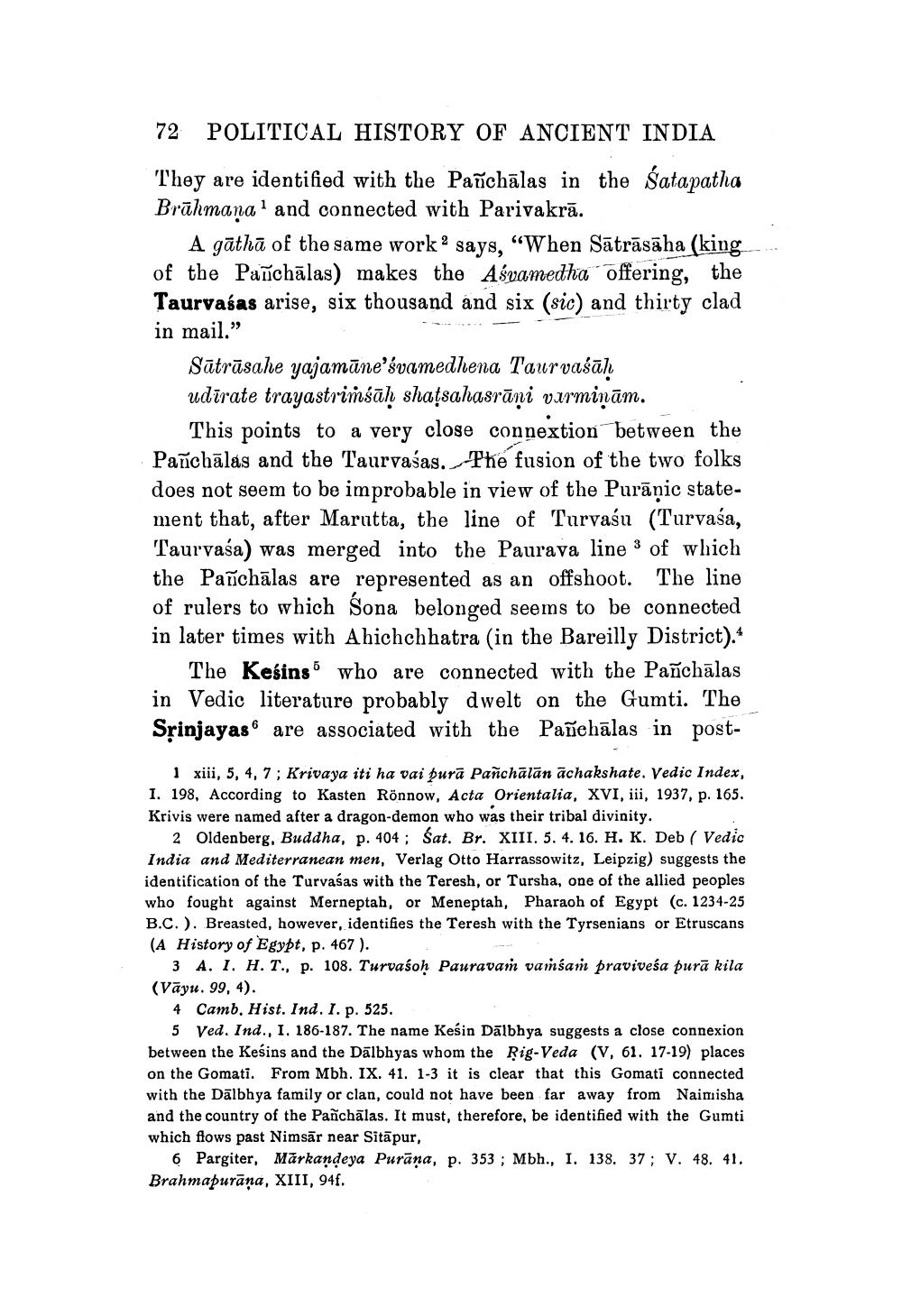________________
72 POLITICAL HISTORY OF ANCIENT INDIA
They are identified with the Pañchālas in the Satapatha Brāhmana' and connected with Parivakrā.
A gāthā of the same worksays, "When Sātrāsāha (king... of the Pañchālas) makes the Aśvamedha offering, the Taurvašas arise, six thousand and six (sic) and thirty clad in mail.”
Sūtrāsahe yajamāne’śvamedhena Taurvašūh udīrate trayastrimśāh shatsahasrāni varmiņām.
This points to a very close connextion between the Pañchālas and the Taurvašas. The fusion of the two folks does not seem to be improbable in view of the Purāṇic statement that, after Marutta, the line of Turvasu (Turvasa, Taurvasa) was merged into the Paurava line 3 of which the Pañchālas are represented as an offshoot. The line of rulers to which Sona belonged seems to be connected in later times with Ahichchhatra (in the Bareilly District).*
The Keśins who are connected with the Pañchālas in Vedic literature probably dwelt on the Gumti. The Srinjayas are associated with the Pañehālas in post
1 xiii, 5, 4, 7; Krivaya iti ha vai burā Panchālān āchakshate. Vedic Index, 1. 198. According to Kasten Rönnow, Acta Orientalia, XVI, iii, 1937, p. 165. Krivis were named after a dragon-demon who was their tribal divinity.
2 Oldenberg, Buddha, p. 404 ; Sat. Br. XIII. 5. 4. 16. H. K. Deb ( Vedic India and Mediterranean men, Verlag Otto Harrassowitz, Leipzig) suggests the identification of the Turvasas with the Teresh, or Tursha, one of the allied peoples who fought against Merneptah, or Meneptah, Pharaoh of Egypt (c. 1234-25 B.C.). Breasted, however, identifies the Teresh with the Tyrsenians or Etruscans (A History of Egypt, p. 467 ).
3 A. I. H. T., p. 108. Turvasoh Pauravam vamsam praviveśa purā kila (Vāyu. 99, 4).
4 Camb. Hist. Ind. I. p. 525.
5 Ved. Ind., I. 186-187. The name Kesin Dalbhya suggests a close connexion between the Kesins and the Dālbhyas whom the Rig Veda (V, 61. 17-19) places on the Gomati. From Mbh. IX. 41. 1-3 it is clear that this Gomati connected with the Dalbhya family or clan, could not have been far away from Naimisha and the country of the Panchālas. It must, therefore, be identified with the Gumti which flows past Nimsār near Sitāpur,
6 Pargiter, Mārkandeya Purana, p. 353; Mbh., I. 138. 37; V. 48. 41. Brahmapurāņa, XIII, 94f.




